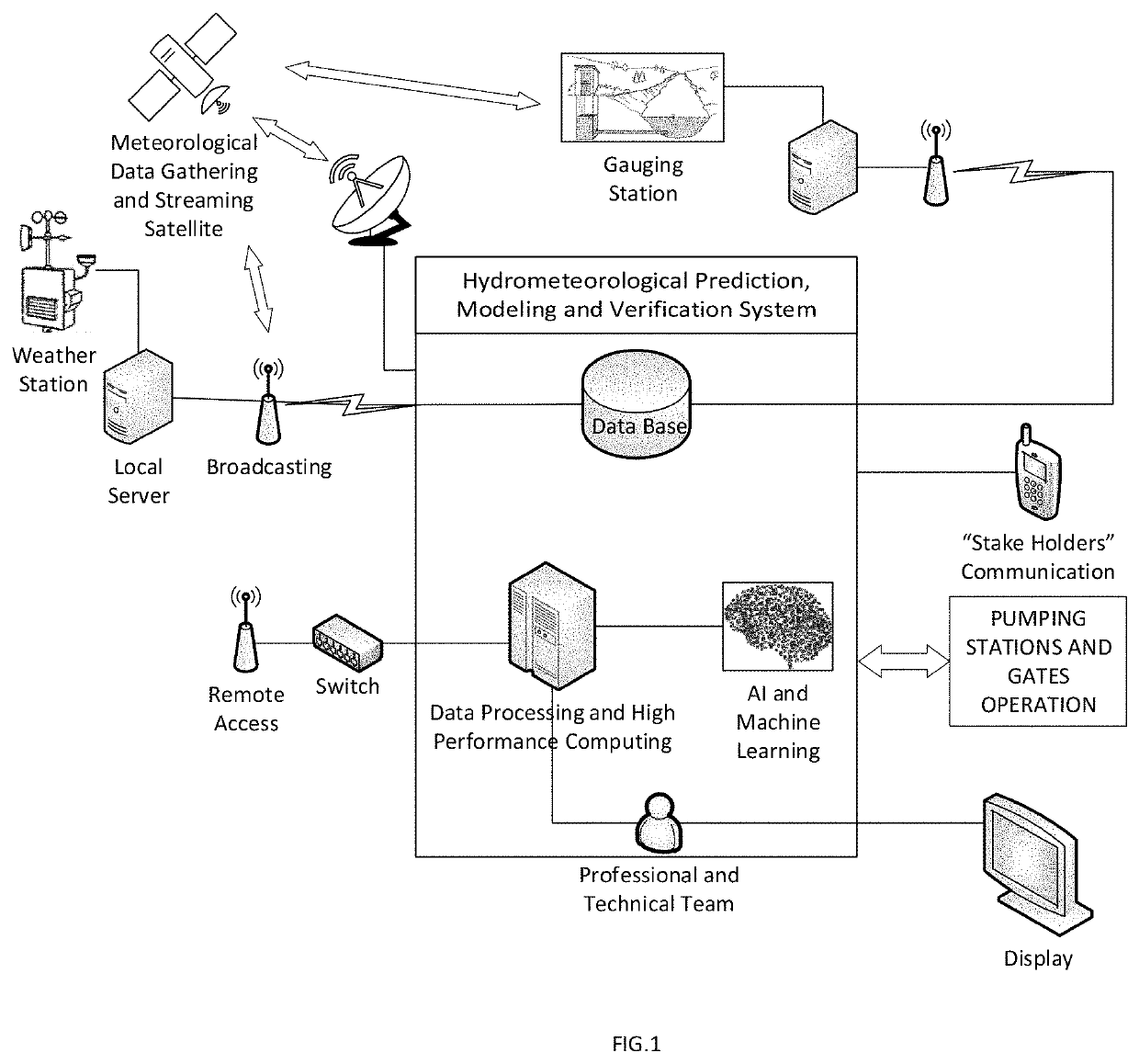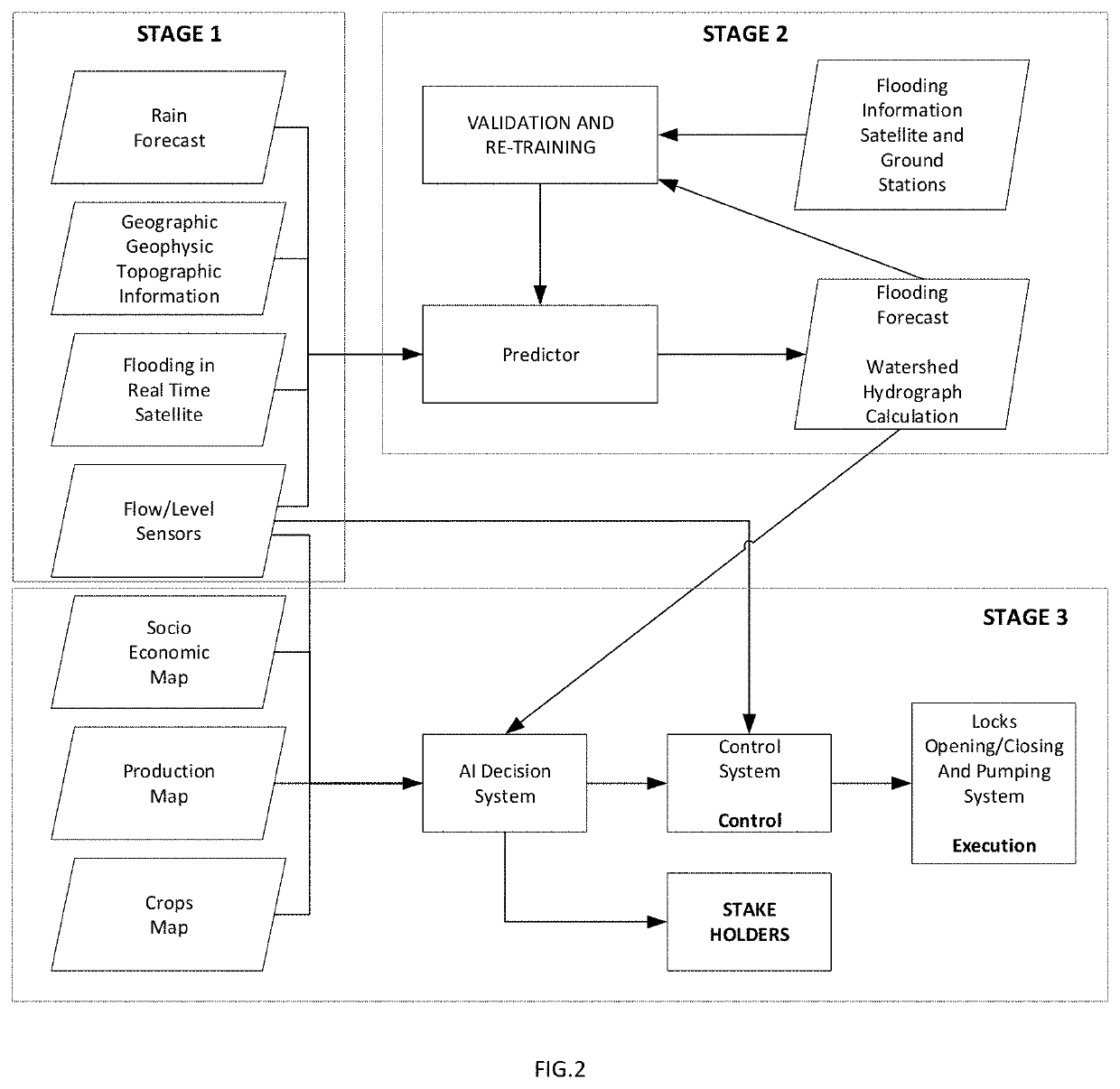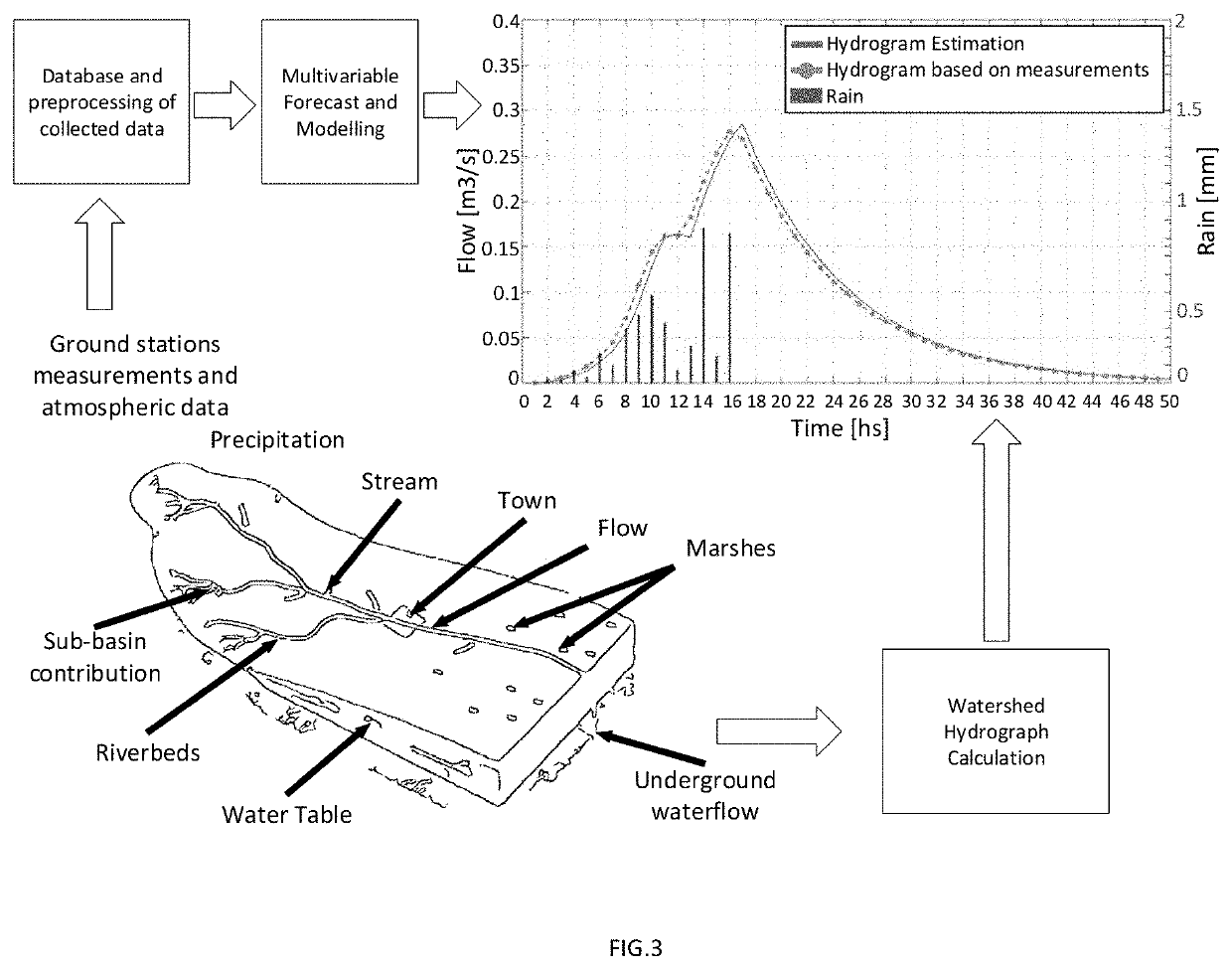System method and apparatus for ai-based adaptive control of hydrology management for basin rivers
a hydrology management and adaptive control technology, applied in the field of systems and methods of hydrology management for basin rivers, can solve the problems of generating recommendations, management systems without intelligence, and current technology only receiving information and not addressing existing problems
- Summary
- Abstract
- Description
- Claims
- Application Information
AI Technical Summary
Benefits of technology
Problems solved by technology
Method used
Image
Examples
Embodiment Construction
[0046]The invention, in its preferred mode of implementation, entails a process and system of hydrology analysis and management using Artificial Intelligence (AI) for watersheds with networks of weather stations and artificial drainage systems with administration of natural and artificial reservoirs through locks and pumping stations that offer a real-time response to the problem during its occurrence, thereby optimizing flood control in the watershed to which the invention is applied. The term ‘real time’ should be understood as the response time of the system within the magnitude of the timing of the development of the meteorological phenomenon.
[0047]As described below, in some embodiments, implementation of the invention relates to two general subsystems: The software has two directly coupled modules. One that calculates the forecast of rain to fall in a spatial distribution of the terrain. Then, these projections are the input of the runoff model that calculates how the distribu...
PUM
 Login to View More
Login to View More Abstract
Description
Claims
Application Information
 Login to View More
Login to View More - R&D
- Intellectual Property
- Life Sciences
- Materials
- Tech Scout
- Unparalleled Data Quality
- Higher Quality Content
- 60% Fewer Hallucinations
Browse by: Latest US Patents, China's latest patents, Technical Efficacy Thesaurus, Application Domain, Technology Topic, Popular Technical Reports.
© 2025 PatSnap. All rights reserved.Legal|Privacy policy|Modern Slavery Act Transparency Statement|Sitemap|About US| Contact US: help@patsnap.com



